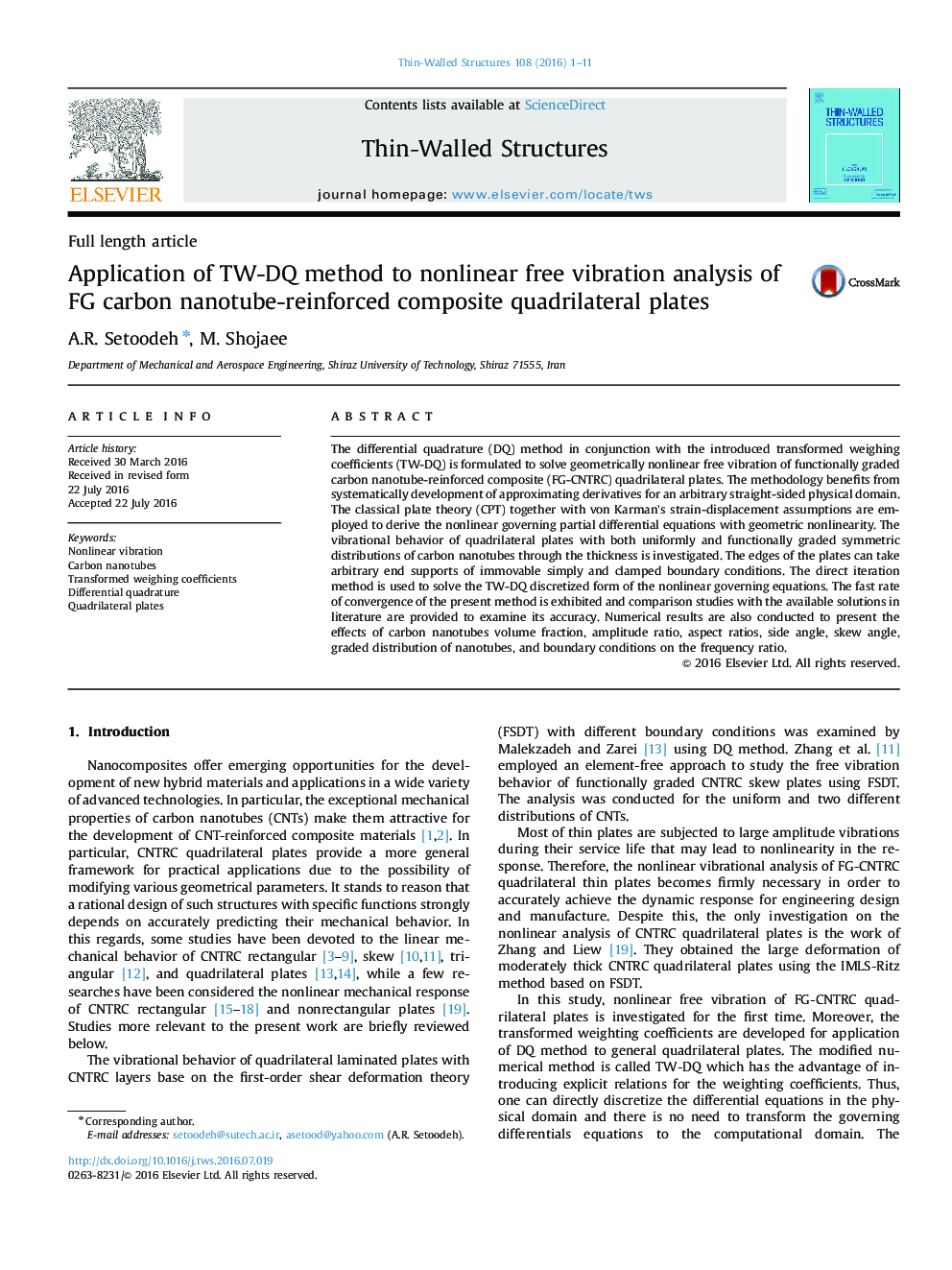| Article ID | Journal | Published Year | Pages | File Type |
|---|---|---|---|---|
| 570555 | Thin-Walled Structures | 2016 | 11 Pages |
•The differential quadrature method in conjunction with the introduced transformed weighing coefficients.•Geometrically nonlinear free vibration of FG CNT-reinforced composite quadrilateral plates.•Systematically development of approximating derivatives for an arbitrary straight-sided physical domain.•The classical plate theory together with von Karman’s strain-displacement assumptions are employed.
The differential quadrature (DQ) method in conjunction with the introduced transformed weighing coefficients (TW-DQ) is formulated to solve geometrically nonlinear free vibration of functionally graded carbon nanotube-reinforced composite (FG-CNTRC) quadrilateral plates. The methodology benefits from systematically development of approximating derivatives for an arbitrary straight-sided physical domain. The classical plate theory (CPT) together with von Karman’s strain-displacement assumptions are employed to derive the nonlinear governing partial differential equations with geometric nonlinearity. The vibrational behavior of quadrilateral plates with both uniformly and functionally graded symmetric distributions of carbon nanotubes through the thickness is investigated. The edges of the plates can take arbitrary end supports of immovable simply and clamped boundary conditions. The direct iteration method is used to solve the TW-DQ discretized form of the nonlinear governing equations. The fast rate of convergence of the present method is exhibited and comparison studies with the available solutions in literature are provided to examine its accuracy. Numerical results are also conducted to present the effects of carbon nanotubes volume fraction, amplitude ratio, aspect ratios, side angle, skew angle, graded distribution of nanotubes, and boundary conditions on the frequency ratio.
